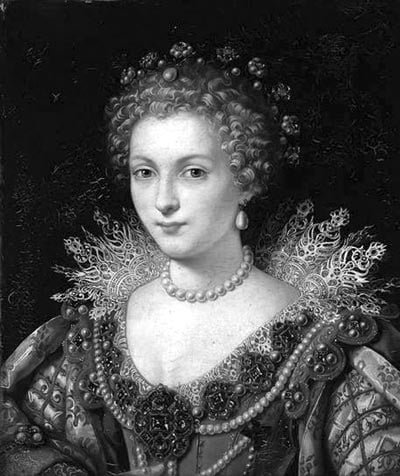Born: 1552, Bologna, Papal States
Died: Aug 11, 1614, Rome

Lavinia Fontana was an Italian painter, one of the most successful women artists of her era. During her career, Fontana executed a series of major public commissions, including the paintings of both religious and mythological subjects. This was an unusual accomplishment as most women painters at that time were limited to portrait painting. Thirty paintings attributed to Fontana survive, constituting the largest existing body of work of any woman prior to 1700.
Born in Bologna, Italy, Lavinia was the daughter of Prospero Fontana, a leading mannerist painter of that city; thus professional training would have been available to her within her family circle. In 1577, she married a wealthy artist, Gian Paolo Zappi, who acknowledged his wife’s talent and limited his own artistic activity to painting backgrounds in some of her paintings. Despite her demanding artistic career, Fontana bore 11 children.
By the 1570s a steady stream of portrait commissions kept Fontana busy. Many of her sitters were women, but she also painted a number of men of the local aristocracy. Her portrait style combines an elegance and an elongation of the human figure that was typical of the mannerist style, with precise description, especially of clothing and other textures, that was inspired by Flemish art. One major commission, The Visit of the Queen of Shebato Solomon (1600, National Gallery, Dublin, Ireland), is probably a group portrait of the wealthy and powerful Gonzaga family. The ruling family of the Italian city of Mantua (Mantova), the Gonzagas may have stopped in Bologna in 1600 on their way to the wedding of Italian noblewoman Marie de Médicis to King Henry IV of France.
Once her career was well established, Fontana began to receive commissions for large religious works. The first of these works was Holy Family (1589), an altarpiece created for the church of the Spanish royal palace, El Escorial. She created another altarpiece, The Vision of Saint Hyacinth (1599-1600), for the church of Santa Sabina in Rome, Italy, introducing her to the art patrons of that city. This led to an invitation from Pope Clement VIII to become an official painter to the papal court. In 1603, she moved permanently to Rome, where she continued to receive commissions for the paintings of religious subjects and for portraits.

